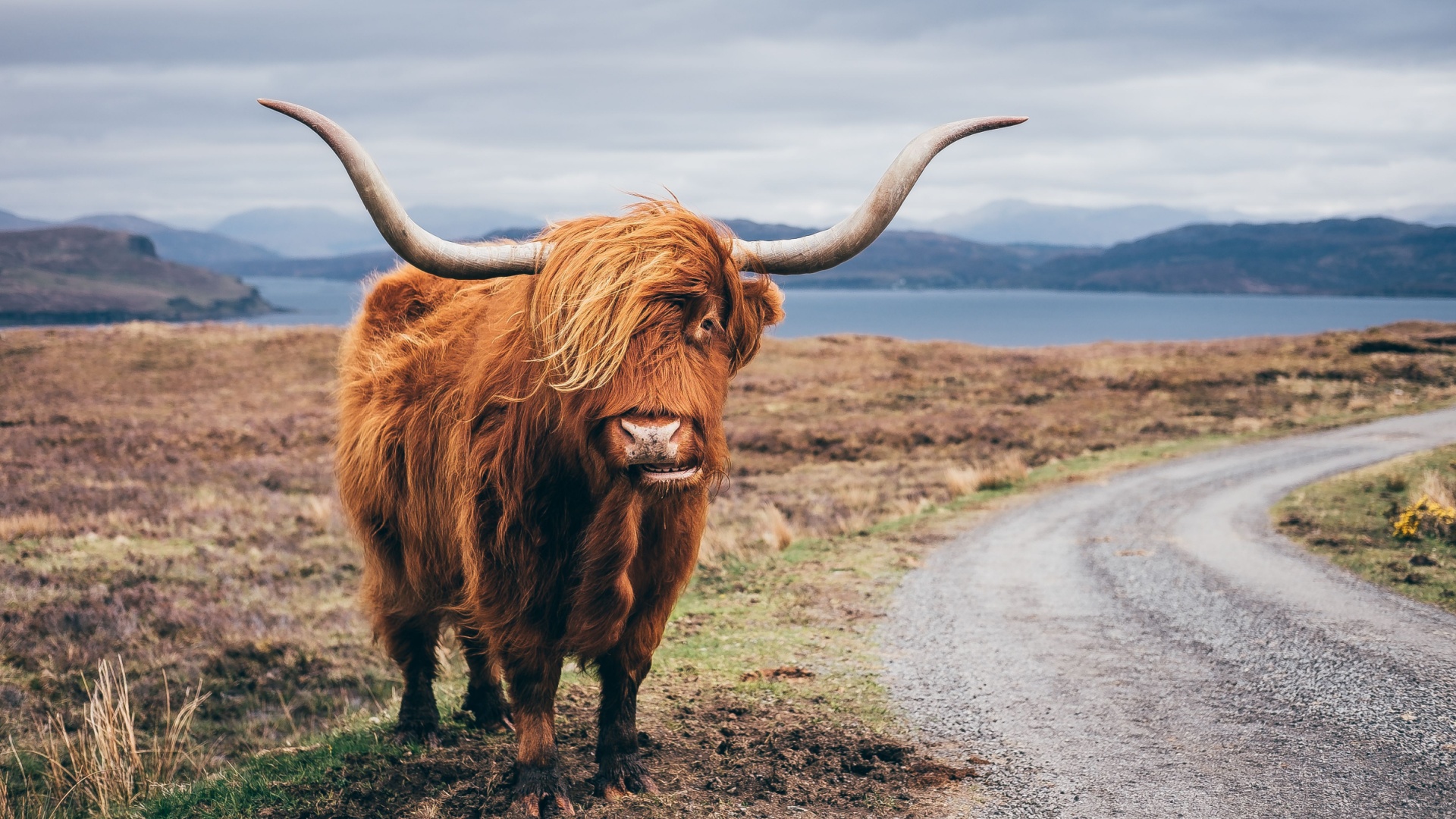The animal kingdom is full of creatures with extraordinary adaptations, and some stand out for their remarkable coats of fur or hair.
Whether it’s for insulation in freezing climates, camouflage in the wild, or simply their unique breed traits, these animals have some of the thickest, longest, or most unusual hair in the world.
From fluffy farm animals to shaggy pets, let’s explore the fascinating world of the hairiest animals on the planet!
1. Yak
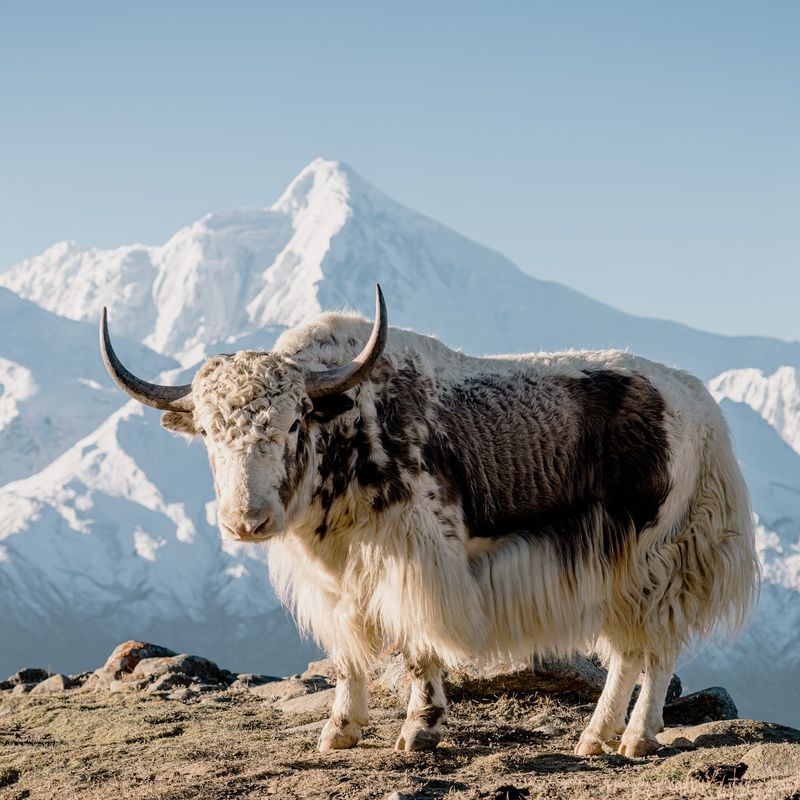
The yak is a majestic creature native to the Himalayan region, known for its long, shaggy coat that provides necessary insulation against the harsh, cold environment. With its robust body and strong legs, the yak is well-adapted to high altitudes, making it an essential part of the livelihood for many local communities. Yaks are often used as pack animals, helping to carry goods across rugged terrains.
Their milk is rich and creamy, used to make butter and cheese, which are staple foods in many Himalayan diets. The wool of the yak is also highly valued, spun into yarn for warm clothing and blankets. Despite their large size and imposing horns, yaks are gentle animals, often grazing peacefully in the high-altitude meadows. Their thick fur comes in various shades of brown, black, and white, adding to their striking appearance.
These furry giants are a vital part of the Himalayan ecosystem, contributing to both the environment and the communities they support.
2. Highland Cattle
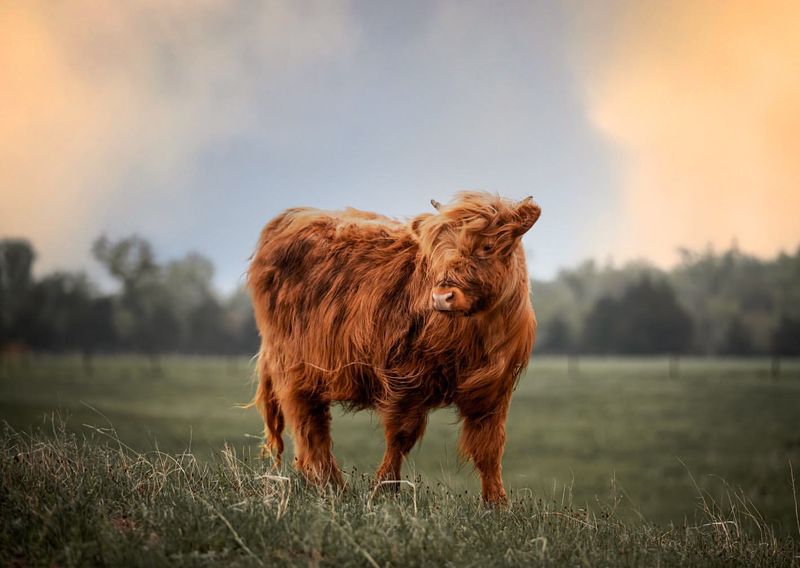
With their distinctively long coats, Highland cattles are an iconic sight in the Scottish Highlands. These cattle are renowned for their resilience and ability to thrive in harsh climates, thanks to their thick hair that protects them from wind and rain. Their coats come in various colors, ranging from black to red, and even white, making each individual unique.
Highland cattle have long horns that add to their majestic appearance and serve to protect them from predators. Known for their docile temperament, Highland cattle are often raised for their lean meat, which is prized for its flavor and quality. Their ability to graze on steep and rugged terrains makes them invaluable for maintaining the landscape.
These fascinating creatures are not only a symbol of Scotland but also play a crucial role in sustainable farming practices, contributing to both the economy and the environment.
3. Komondor Dog
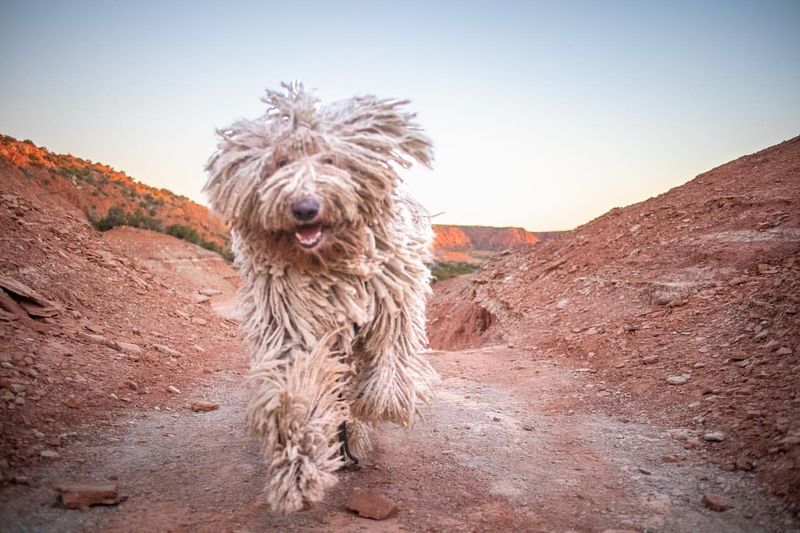
The Komondor dog, often called the ‘mop dog,’ is famous for its unique corded coat that resembles dreadlocks. This Hungarian breed was originally used to guard livestock, and its thick fur offered protection against harsh weather and predators. Komondors have a natural instinct to protect and are known for their loyalty and bravery.
Their coat, which requires regular maintenance, helps them blend in with the sheep they guard, serving as both camouflage and armor. Though their appearance might be unusual, Komondors are loving family pets. With proper training, they can be gentle and affectionate companions.
Their distinct look makes them a standout in dog shows, and their intelligence and independence are highly valued by owners. These dogs are more than just their looks; they are devoted guardians with a rich history and unique charm.
4. Afghan Hound
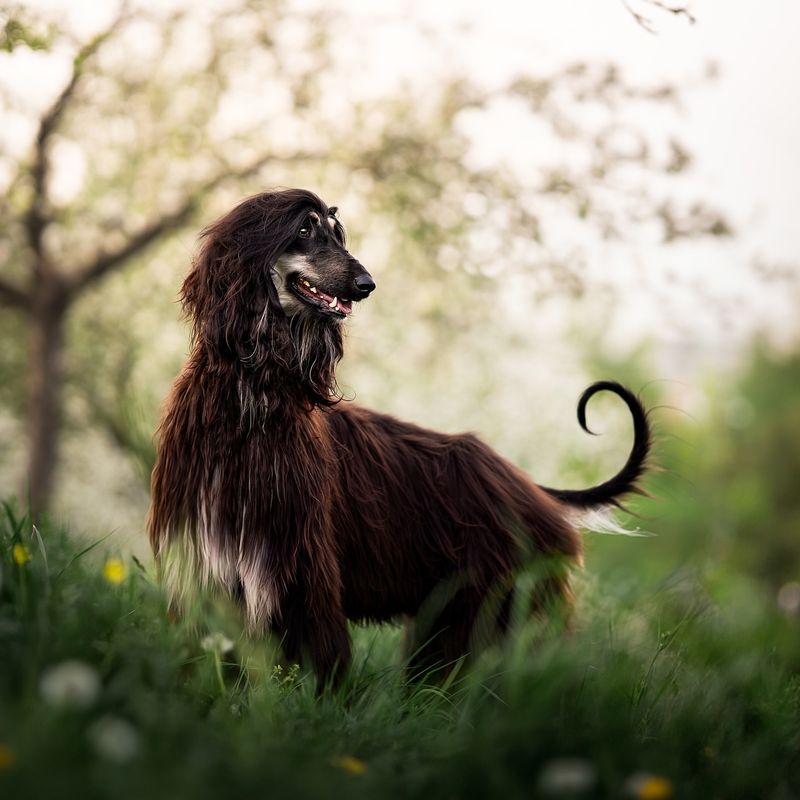
The Afghan Hound is a breed of elegance and beauty, recognized by its long, flowing coat and poised demeanor. Originating from the mountains of Afghanistan, this breed was traditionally used for hunting, relying on its speed and agility.
Their silky hair requires regular grooming, a task that owners often embrace as part of the bonding process. Afghan Hounds are known for their independence, sometimes displaying a regal aloofness that adds to their mystique. Despite their dignified appearance, Afghan Hounds are affectionate and playful pets.
They thrive in active households where they can exercise their natural running ability. Their unique looks make them a popular choice in dog shows, capturing the attention of judges and spectators alike.
The Afghan Hound’s combination of beauty, grace, and spirit is truly captivating.
5. Puli Dog
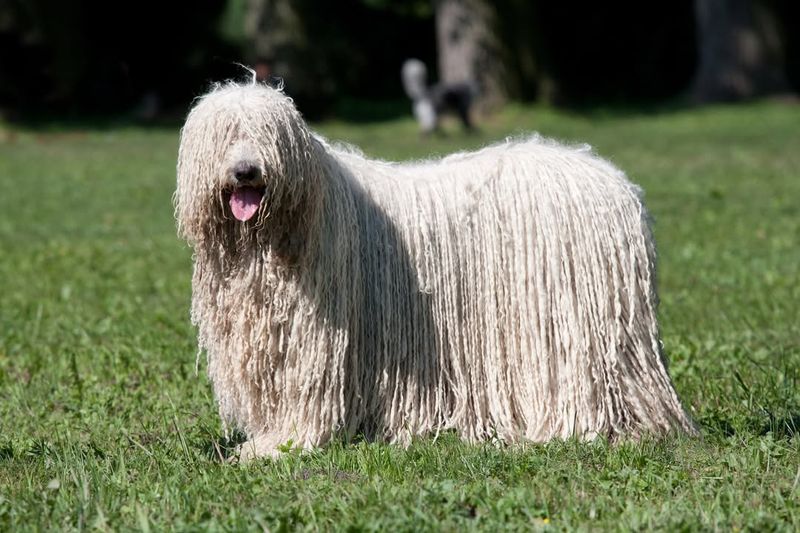
The Puli dog, with its distinctive, dense corded coat, is a Hungarian herding breed known for its agility and intelligence. The unique cords of their coat provide protection from harsh weather, making them well-suited for outdoor work. Pulik are energetic and lively dogs, often seen bounding across fields with remarkable speed.
Their playful nature makes them excellent companions, and they are particularly fond of games that involve running and jumping. The upkeep of a Puli’s coat requires dedication, as it needs regular care to prevent matting.
Despite the maintenance, many owners find the grooming process rewarding, enjoying the bond it fosters. Pulik are loyal and devoted, forming strong attachments to their families.
Their spirited personality and distinctive appearance make them a beloved choice for dog enthusiasts around the world.
6. Silkie Chicken
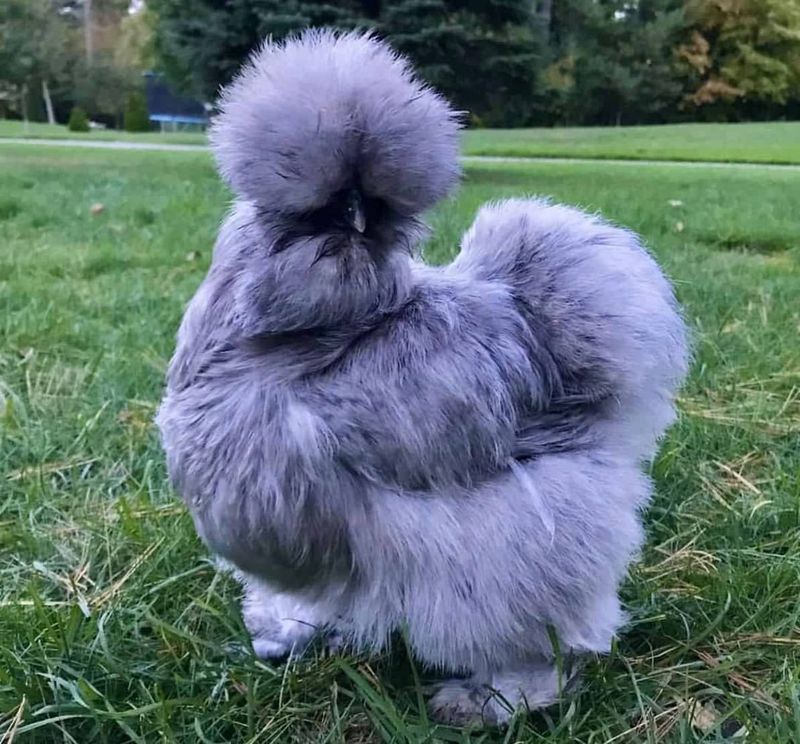
The Silkie chicken, named for its incredibly soft and fluffy plumage, is a breed that stands out in any flock. This chicken’s feathers feel more like silk than typical feathers, earning them their unique name. Silkies are known for their calm and friendly temperament, making them excellent pets for families and hobby farmers.
Their unique appearance, with black skin and bones, contrasts strikingly with their white feathers. These chickens are not just about looks; they are also known for their brooding instincts, often hatching and raising chicks of other breeds.
Silkies require regular grooming to keep their feathers in top condition, a task that many owners find enjoyable. Their charming personality and distinctive look have made them a popular choice among chicken enthusiasts, adding a touch of whimsy to any farmyard.
7. Angora Rabbit
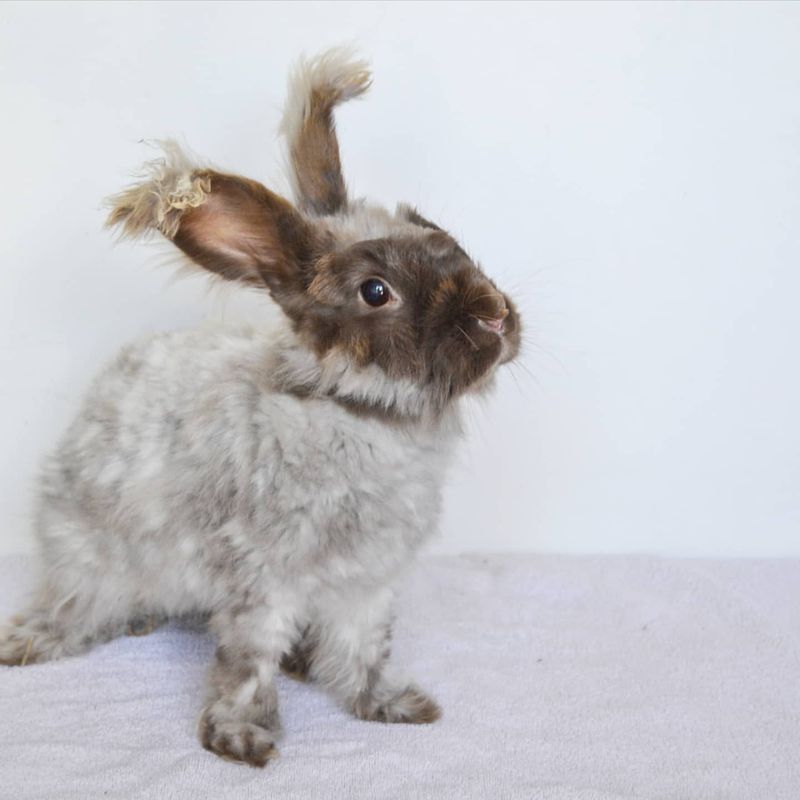
This fluffy wonder is prized for its incredibly soft and luxurious wool. Originating from Turkey, these rabbits have been bred for centuries specifically for their wool, which is sheared regularly to prevent matting. Angoras require frequent grooming to maintain their coat, but many owners find the process therapeutic and rewarding.
The gentle nature of these rabbits makes them ideal pets, and they are often described as affectionate and social. Their wool, known as angora, is spun into yarn for high-quality garments, offering warmth and softness that is difficult to match.
Angora rabbits come in several varieties, each with distinct characteristics, and are a favorite among those who enjoy fiber arts. Their charming appearance and gentle demeanor make them a beloved addition to homes and fiber farms alike.
8. Alpaca
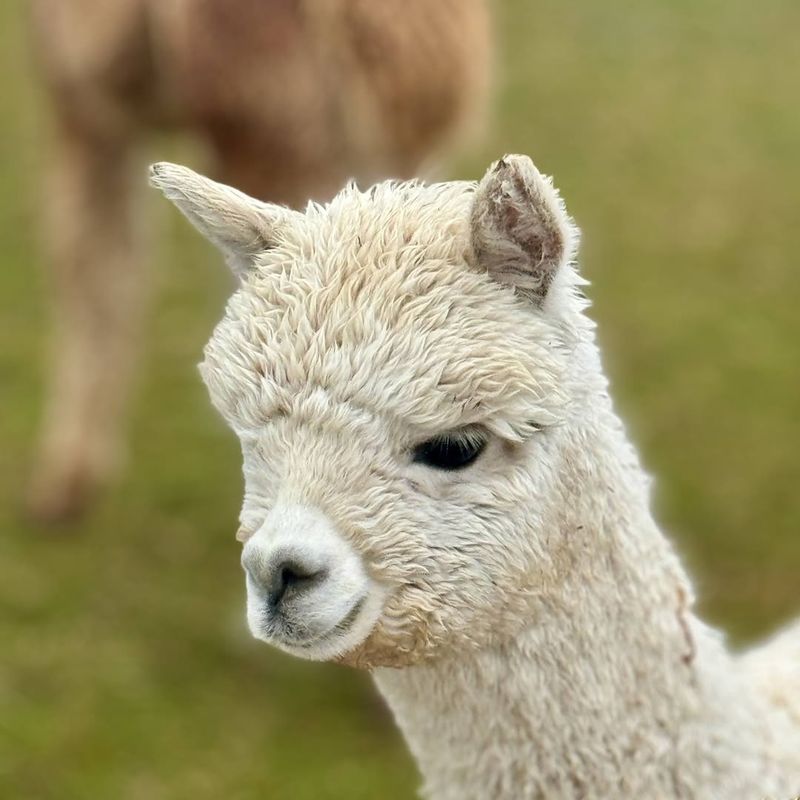
Alpacas are charming creatures, hailing from the Andes mountains in South America. Renowned for their soft and fluffy fleece, these animals are raised primarily for wool production, offering a fiber that is both warm and lightweight.
Their gentle and social nature makes them excellent companions and herd animals. Alpacas are also great therapy animals, known for their calming presence and their ability to reduce stress and promote emotional well-being.
They are often kept on farms for their wool, which is spun into luxurious yarn. Alpacas come in a variety of colors, from white to black and everything in between.
Their fleece requires annual shearing to maintain its quality, and many farmers take pride in the process. In addition to their wool, alpacas are known for their ecological benefits, as they graze without damaging the landscape.
9. Bactrian Camel
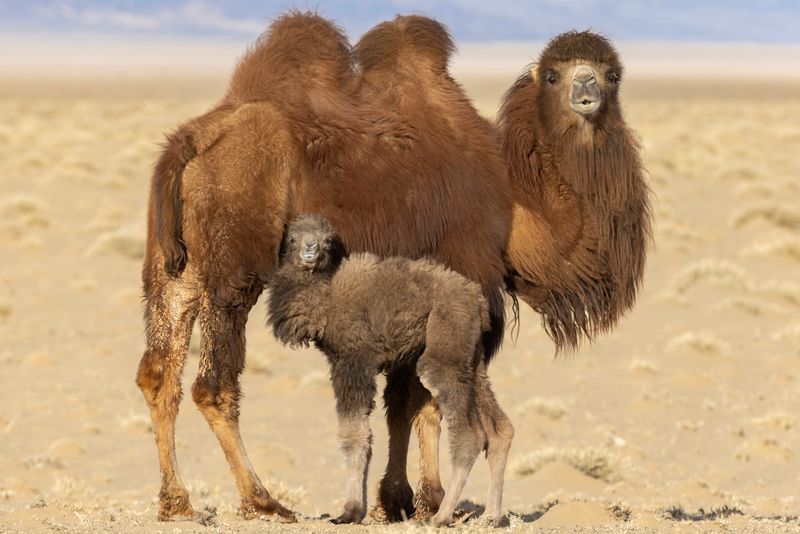
This extraordinary creature is adapted to survive in some of the harshest environments on Earth. With its thick coat, this camel is well-suited for the cold desert regions of Central Asia. Bactrian camels have two humps, which store fat, allowing them to endure long journeys without food or water.
Their fur changes with the seasons, growing long and shaggy during the winter months and shedding as the temperature rises. Known for their resilience and strength, Bactrian camels are often used as pack animals, carrying heavy loads across difficult terrains.
Despite their rugged appearance, they are gentle and social animals, often forming strong bonds with their handlers. These camels play a vital role in the cultures and economies of the regions they inhabit, symbolizing endurance and adaptability.
Their unique appearance and incredible survival skills make them a subject of fascination for many.
10. Lhasa Apso
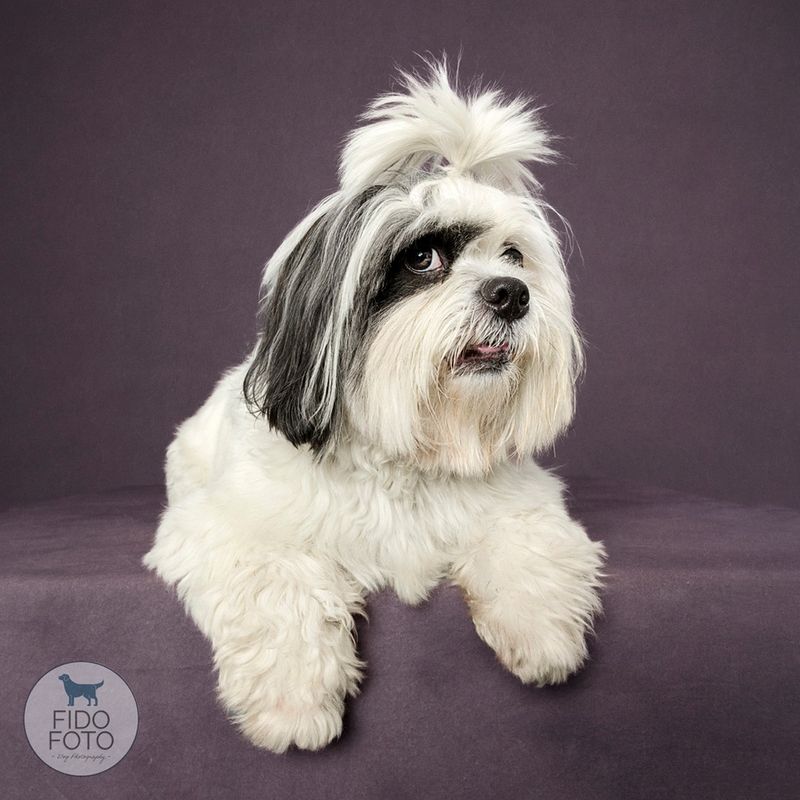
The Lhasa Apso is a small but spirited breed, known for its long, flowing coat that drapes gracefully to the ground. Originally from Tibet, this breed was traditionally kept by monks as a watchdog in monasteries, valued for its keen hearing and alert nature.
Lhasa Apsos have a distinct appearance, with hair that requires regular grooming to keep it neat and tangle-free. Despite their size, they possess a confident demeanor and are often described as independent and loyal.
These dogs are affectionate companions, forming strong bonds with their families. Their small size makes them suitable for various living situations, from apartments to larger homes.
The Lhasa Apso’s unique combination of appearance, personality, and history makes it a cherished pet for those who appreciate its distinct charm and vigilant nature.
11. Norwegian Forest Cat
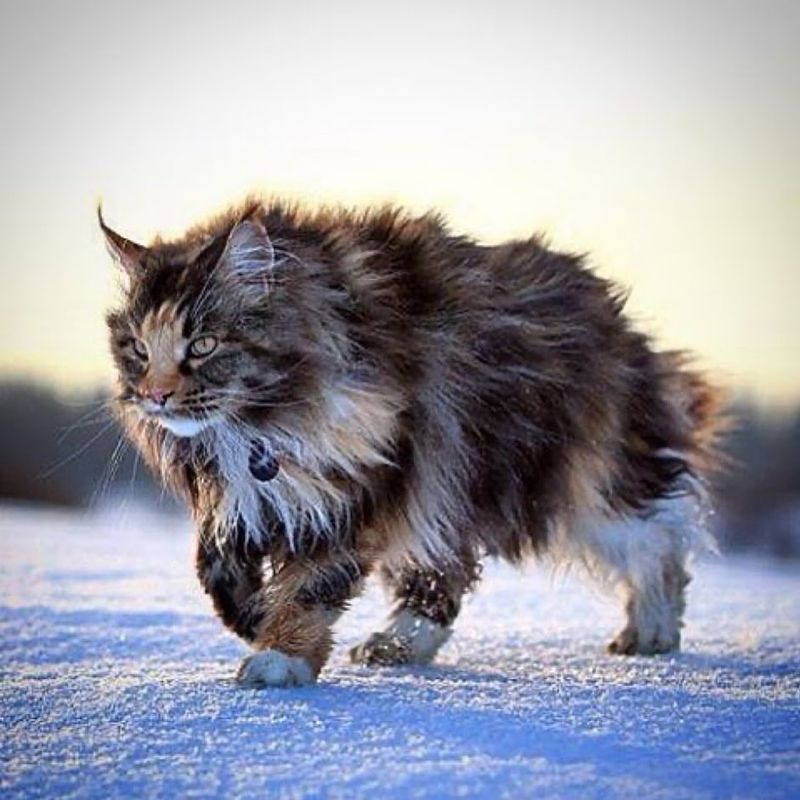
This majestic feline is known for its thick, water-repellent fur that enables it to thrive in the cold climates of Scandinavia. Often associated with Viking legends, this breed is adapted to survive harsh winters. With a robust build and bushy tail, the Norwegian Forest Cat is a skilled climber, often found perched in high places observing its surroundings.
Their gentle and friendly nature makes them wonderful companions, and they are particularly fond of interactive play. Regular grooming is essential to maintain their thick coat, which many owners find a bonding experience. These cats are known for their independence, yet they form close bonds with their humans, often following them around the house.
The combination of beauty, adaptability, and personality makes the Norwegian Forest Cat a beloved pet for those who appreciate its unique heritage and stunning appearance.
12. Siberian Cat
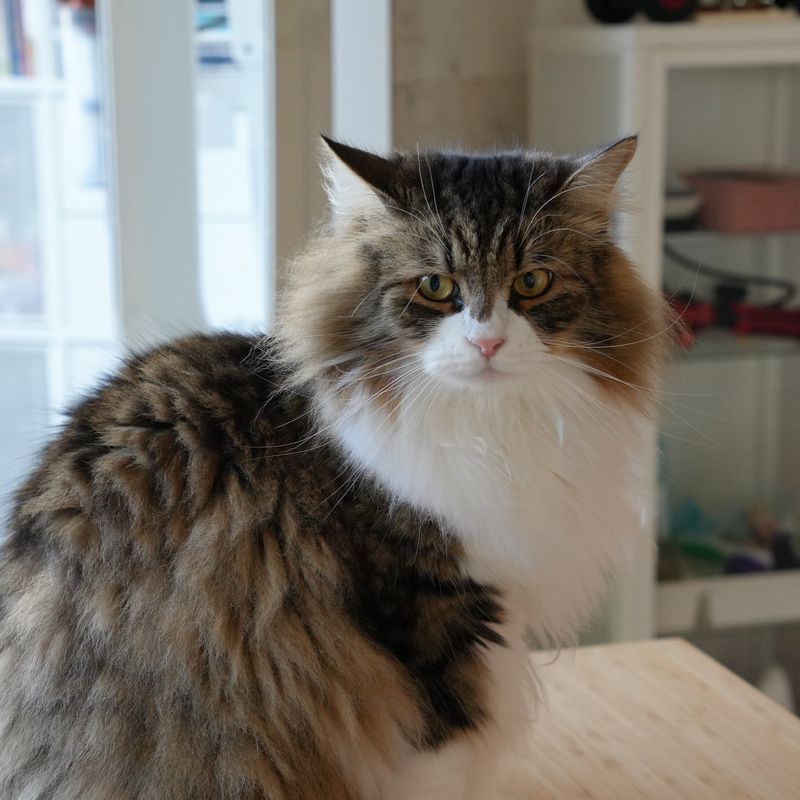
The Siberian cat is a robust and agile breed, hailing from the cold climates of Russia. Known for its thick, luxurious fur, this cat is well-adapted to withstand harsh winters, making it a popular choice for those who live in colder regions. Siberians have a playful and affectionate nature, often described as dog-like in their loyalty and companionship.
They enjoy interactive play and are known for their agility and strength, making them skilled hunters. Their coat, which requires regular grooming, comes in a variety of colors and patterns, adding to their stunning appearance. Siberian cats are hypoallergenic for some people, making them a suitable choice for allergy sufferers.
Their combination of beauty, intelligence, and loving disposition makes them a cherished pet, capturing the hearts of many cat enthusiasts around the world.
13. Musk Ox
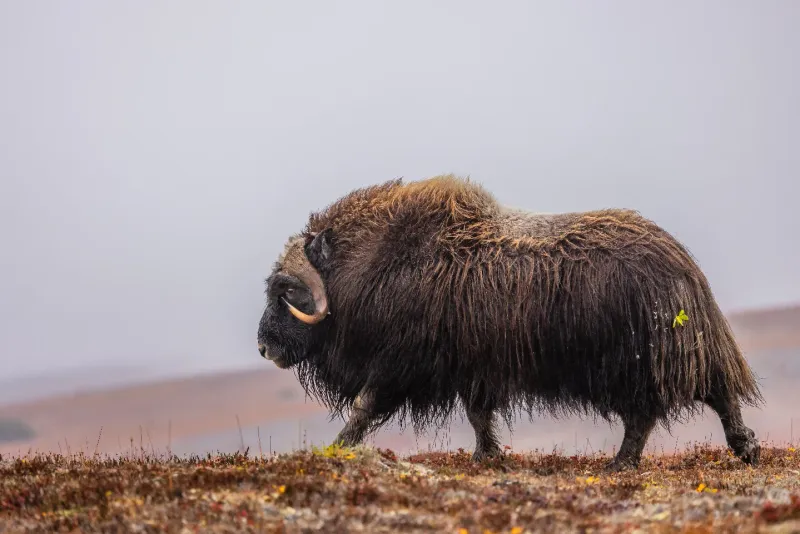
This formidable creature thrives in the Arctic tundra with its thick, woolly coat that provides excellent insulation against the freezing temperatures. Known for their strong and sturdy build, musk oxen are well adapted to life in some of the harshest environments on Earth. Their coat, composed of a soft underlayer called qiviut, is shed annually and harvested to create luxurious garments prized for their warmth and softness.
Musk oxen are social animals, often found in herds, and their defensive behavior is notable, as they form protective circles around their young when threatened. Despite their rugged appearance, musk oxen are gentle grazers, feeding on grasses and Arctic plants.
They play a crucial role in their ecosystem, contributing to the biodiversity of the tundra. The combination of their unique appearance, ecological significance, and the value of their wool makes them a fascinating and important species.
14. Orangutan
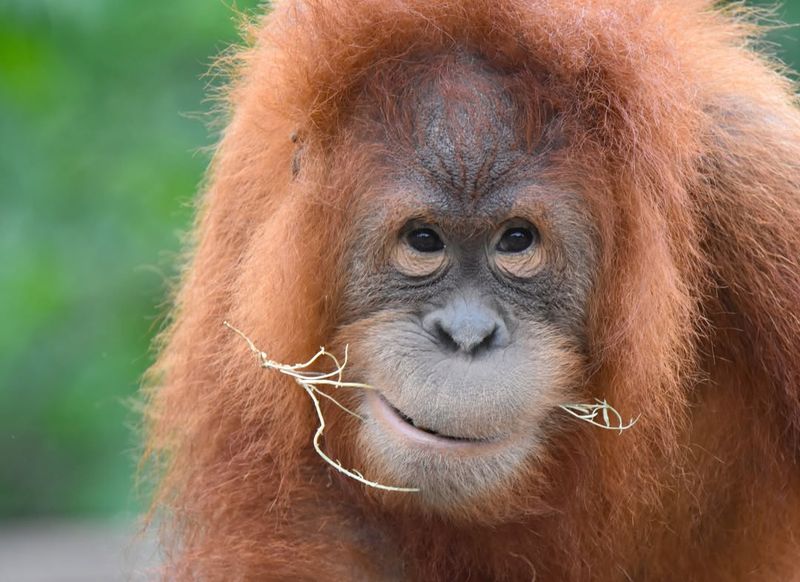
The orangutan, with its distinct long reddish hair, is one of the most intelligent and gentle primates found in the rainforests of Borneo and Sumatra. Known for their remarkable intelligence and problem-solving abilities, these apes are highly adept at using tools and navigating their complex forest environment.
Orangutans are solitary creatures, often spending their days swinging through the canopy, searching for fruit and other foods. Their long arms and hook-like hands make them extraordinary climbers, perfectly adapted to their arboreal lifestyle. With their expressive faces and curious nature, orangutans capture the imagination of many wildlife enthusiasts.
Unfortunately, orangutans face significant threats from habitat destruction and poaching, making conservation efforts critical for their survival.
The combination of their unique appearance, intelligence, and vulnerable status highlights the need to protect these extraordinary primates and their habitats.
15. Sloth
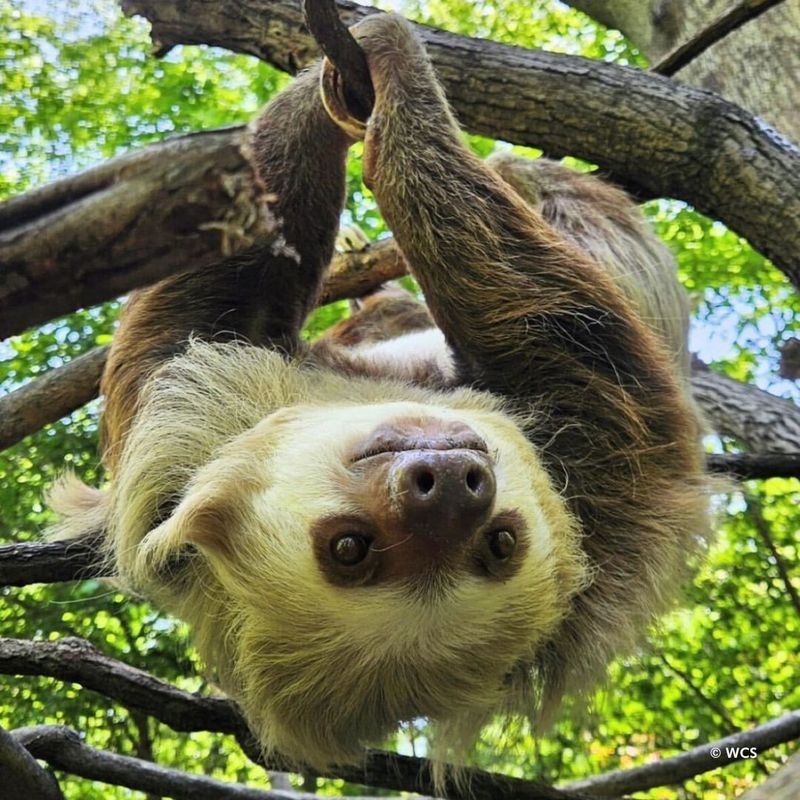
The sloth is a unique and intriguing creature, known for its slow movements and long, shaggy fur that provides camouflage among the trees of Central and South America’s rainforests. This fur hosts a unique ecosystem of algae and insects, offering the sloth additional camouflage from predators. Sloths spend most of their lives hanging upside down from tree branches, using their long claws to grip securely.
Their slow metabolism means they move leisurely, conserving energy in their lush, tropical environment. Despite their slow pace, sloths are excellent swimmers, able to move efficiently through water with their strong limbs.
Their gentle demeanor and unhurried lifestyle have made sloths a symbol of relaxation and mindfulness. As their habitats face threats from deforestation, conservation efforts are crucial to ensuring the survival of these fascinating animals.
The sloth’s unique adaptations and endearing appearance continue to captivate and inspire people worldwide.

